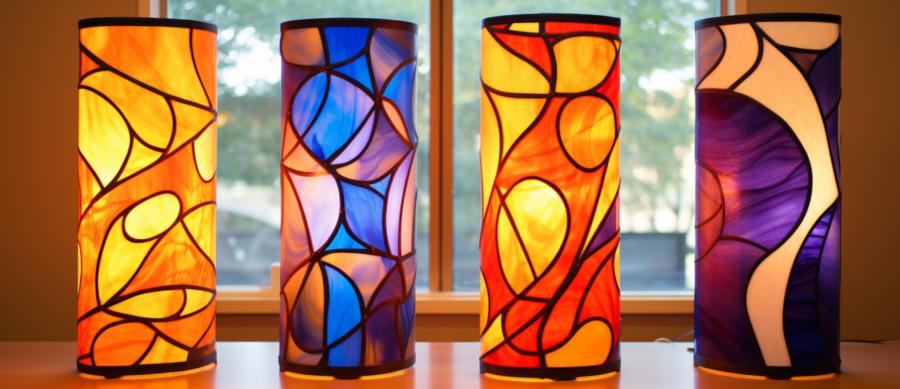Light Therapy for Seasonal Affective Disorder: Combatting Winter Blues

What Is Seasonal Affective Disorder?
Seasonal Affective Disorder, also known as SAD, is an affliction that affects some individuals during the winter months. It's a hilarious twist of irony that the acronym spells out SAD, but that's neither here nor there. The less fortunate of our species become engulfed in the winter blues, a melancholic state characterized by low moods, lethargy, and a troubling affinity for sad violin music. While we can all appreciate the occasional wallowing in self-pity, when it becomes a seasonal tradition, it's time to take action.Enter Light Therapy
Lo and behold, there is a solution to this frosty fiasco, and it's called light therapy! It is a shining beacon of hope in the dreary darkness of winter. And no, I'm not talking about strapping oneself to a tanning bed or going on a frenzied sun-worshipping pilgrimage. Light therapy is a more refined, sophisticated approach to dealing with SAD, using specially designed lamps that simulate sunlight. Stick with me, dear reader, as we navigate the illuminated path to understanding and utilizing light therapy.How Does Light Therapy Work?
First and foremost, let's delve into the science of light therapy. Our body is a marvelously complex machine, regulated by various hormones and neurotransmitters. One such neurotransmitter, serotonin, is responsible for regulating mood, appetite, and sleep. It is a cheery little fellow who has a direct connection with sunlight exposure. No sunlight? No serotonin, or rather, not enough of it. This is where the winter blues make their insidious entrance.Light therapy lamps emit a frequency of light similar to natural sunlight, tricking our brain into believing it's being bathed in the warm embrace of the sun. This, in turn, boosts serotonin production, lifting the dark cloud of SAD. So, not only is light therapy a mood booster, but it also helps regulate your sleep and appetite. If that's not a win-win situation, I don't know what is.
Choosing the Right Light Therapy Lamp
Now that you've been enlightened (pun absolutely intended) on the wonders of light therapy, let's discuss the tools of the trade. Not all light therapy lamps are created equal, and choosing the right one is paramount to effectively combatting SAD. Don't worry; I'm here to guide you through this dazzling decision process.- Brightness: A good light therapy lamp should emit 10,000 lux of light, which is the standard dosage for effective treatment. Anything less, and it's like trying to light a bonfire with a matchstick.
- Color Temperature: Aim for a lamp with a color temperature of 4,000 to 6,500 Kelvin. A warmer color temperature can be more comfortable on the eyes, while a cooler one more closely mimics daylight. But beware of lamps that emit blue light, as excessive exposure to blue light is harmful to the eyes and can disrupt sleep patterns.
- UV Filter: Ensure that your light therapy lamp has a UV filter to protect your eyes from harmful UV radiation. We're trying to combat SAD, not give you an eyeful of cataracts.
- Size and Portability: Choose a lamp that suits your lifestyle and environment. A larger lamp will provide a more extensive light field, while a smaller, more portable one can be easily transported and used in various locations. Balance is key, like a tightrope walker carrying a light therapy lamp on a stick.
How to Use Your Light Therapy Lamp
Now that you've procured your glorious light-emitting weapon against the tyranny of winter blues, it's time to learn how to wield it effectively. Thankfully, it's a rather straightforward process:- Place the lamp at a comfortable distance (usually about 12 to 24 inches) from your face.
- Ensure that the light is directed towards your eyes but avoid direct eye contact with the light source, as staring into any light source is generally ill-advised.
- Use your light therapy lamp for 20 to 30 minutes each morning. This is best done while engaging in a pleasant activity, such as reading, eating, or pondering the existential dilemmas of life.
- Be consistent in your light therapy routine, as it typically takes a few days to a couple of weeks to see significant improvements in your mood and energy levels.
Article kindly provided by healthyvoices.net
Latest Articles
- Chair Yoga Works Wonders For Bodies Of All Ages
- Eyebrows Through the Ages and What They Reveal About Our Faces
- Feeding Plans That Keep Every Pet in Balance
- Hidden Immune Boost Hiding in Plain Sight for Corporate Travellers
- Evening Quiet Isn't Automatic and That's Perfectly Normal
- Quiet Power Makes a Salon Feel Like a VIP Retreat
- Chewing as Meditation and Everyday Calm
- Sleep Deprivation as a Social Problem, Not a Personal Failure
- Why Recovery Rituals Outlast Resolutions and Keep Us Moving Forward
- Desk Job Survival with a Side of Shoulder Rolls
- Why Your Living Room Layout Might Be Causing Your Back Pain
- Why Your Teeth Love Dental Hygienists
- The Hidden Life Skills Buried in Your Workout Schedule
- Why Doing Nothing Might Just Fix Everything
- Jaw to the World: Why Your TMJ Deserves More Respect
- Ink Your Way to Stronger Immunity
- Integrating EFT into Corporate Wellness Programs for a Happier, Healthier Workforce
- Automation's Role in the Future of Laboratory Testing
- Hidden Mold, Hidden Weight Gain? The Shocking Link Between Toxic Air and Your Metabolism
- Solar Sleep: How Renewable Energy Helps You Rest Easier
- Nutrition and Dietetics
- Exercise and Fitness
- Meditation and Yoga
- Mental Health
- Women's Health
- Men's Health
- Children's Health
- Senior Health
- Heart Health
- Sleep Health
- Skin Health
- Eye Health
- Dental Health
- Pain Management
- Addiction and Recovery
- Sexual and Reproductive Health
- Alternative Medicine
- Chronic Conditions
- Weight Management
- Occupational Health and Safety
- Public Health
- General Health Tips
- Beauty

